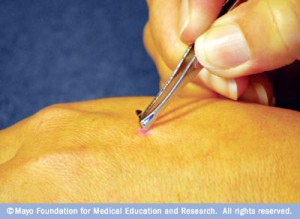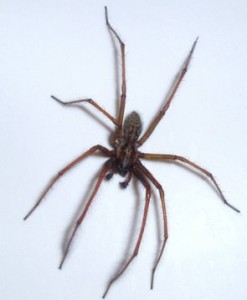READY TO GET STARTED?
REQUEST A FREE ESTIMATE
Fill out the form below or call (888) 466-7849 for a free, no-obligation estimate.
As temperatures continue to increase across the country and the ground becomes warmer, winged termites will emerge in search of a suitable spot to create a new colony, often in residential settings. We want to take this opportunity to educate homeowners about the threat of termites and the possible signs of an infestation this spring.
Termites feed 24 hours a day, seven days a week on the cellulose found in wood and paper products. They are known as “silent destroyers” due to their ability to compromise the structure of a home without being noticed until it’s too late.
Termites are very destructive and the damage inflicted can be quite costly if left untreated. Each year, termites cause more than $5 billion in property damage, so it’s important for homeowners to be on the lookout for signs of these wood-destroying pests in and around their property.
Here are a few clues that termites may be present in a home:
For more information on termites, please visit https://www.callnorthwest.com/termite-control/.
It seems there’s a day/month of recognition for just about anything these days. January is Artichoke and Asparagus Month, June is International Surf Music Month, and we can’t forget about September being Be Kind to Editors & Writers Month. There really seems to be a month for everything. However, we may be partial, but we think that April is a very special month! It’s National Pest Management Month!
National Pest Management Month is a time to celebrate your pest professionals who protect homes and businesses from pest threats! According to Miss Henriksen, NPMA’s VP of public affairs, “During National Pest Management Month, we shine the light on the importance of professional pest management in consumers’ everyday lives.”
Joining NPMA on a media tour is renowned home improvement expert Bob Vila. NPMA and Bob Vila want to remind homeowners of the importance of keeping a pest free home and the ways you can thwart off pest invaders this spring and summer.
In recognition of National Pest Management Month, Bob Vila and NPMA offer the following tips to pest proof your home:
Exclusion
Prevention
Elimination
So what are you waiting on…hug your pest professional today!! Or you can just say thank you!
Bugs are no different than humans in that we’re all in search of 3 basic needs: water, food, and shelter. It’s important when trying to obtain a pest-free home that we are eliminating pest’s basic needs. Limiting their access to these items will be a big step in prevention AND maintenance.
So what steps do you take to eliminate these sources?
How to Eliminate Pest’s Water Sources From Your Home:
How to Eliminate Pest’s Food Sources From Your Home:
How to Eliminate Pest’s Access to Shelter From Your Home:
If pests have already found their way into your home it’s best to call a professional exterminator. A pest professional can properly inspect your property, identify the pest, identify the sources, effectively treat the home for the targeted pest, and work with you to develop a customized action plan to maintain and prevent further issues from occurring. If you’re in need of a professional pest control company call Northwest Exterminating!
Yellow jackets have barbed like pointers on their stinger that cause the stinger to get lodged into the skin. The stinger is usually left behind, along with the venom sac. It is important to remove a stinger as quickly as possible because venom can continue to be released even if it’s not attached to the bee. The venom can cause an allergic reaction or a possible infection.

Source: Mayo Clinic
Symptoms of infection include:
Consult your Doctor immediately if any of these symptoms occur.
Symptoms of an allergic reaction include:
Consult your Doctor immediately at signs of an allergic reaction.
What to do if stung:
It’s very important to call a pest professional if you believe a yellow jacket nest is near your property. We DO NOT recommend you try to remove this on your own…this could result in being stung.
For yellow jacket removal, wasp removal, and hornet removal, call the professionals at Northwest Exterminating.
Other blogs: How to Treat a Yellow Jacket Sting
 The house spider is a common problem that we’re seeing in homes lately. We’ve had lots of calls and concerns about the tiny little pests hanging around. The most effective way of getting rid of spiders is to prevent them from ever coming into your home. Spiders, like most insects, come into your home in search of food. By ridding your home of other insects (regularly scheduled pest maintenance) your home will be useless to the spider.
The house spider is a common problem that we’re seeing in homes lately. We’ve had lots of calls and concerns about the tiny little pests hanging around. The most effective way of getting rid of spiders is to prevent them from ever coming into your home. Spiders, like most insects, come into your home in search of food. By ridding your home of other insects (regularly scheduled pest maintenance) your home will be useless to the spider.
Ways to Prevent Spiders from coming into your home:
Again, regularly scheduled pest control from a professional pest management company will keep out the spiders and their food sources.